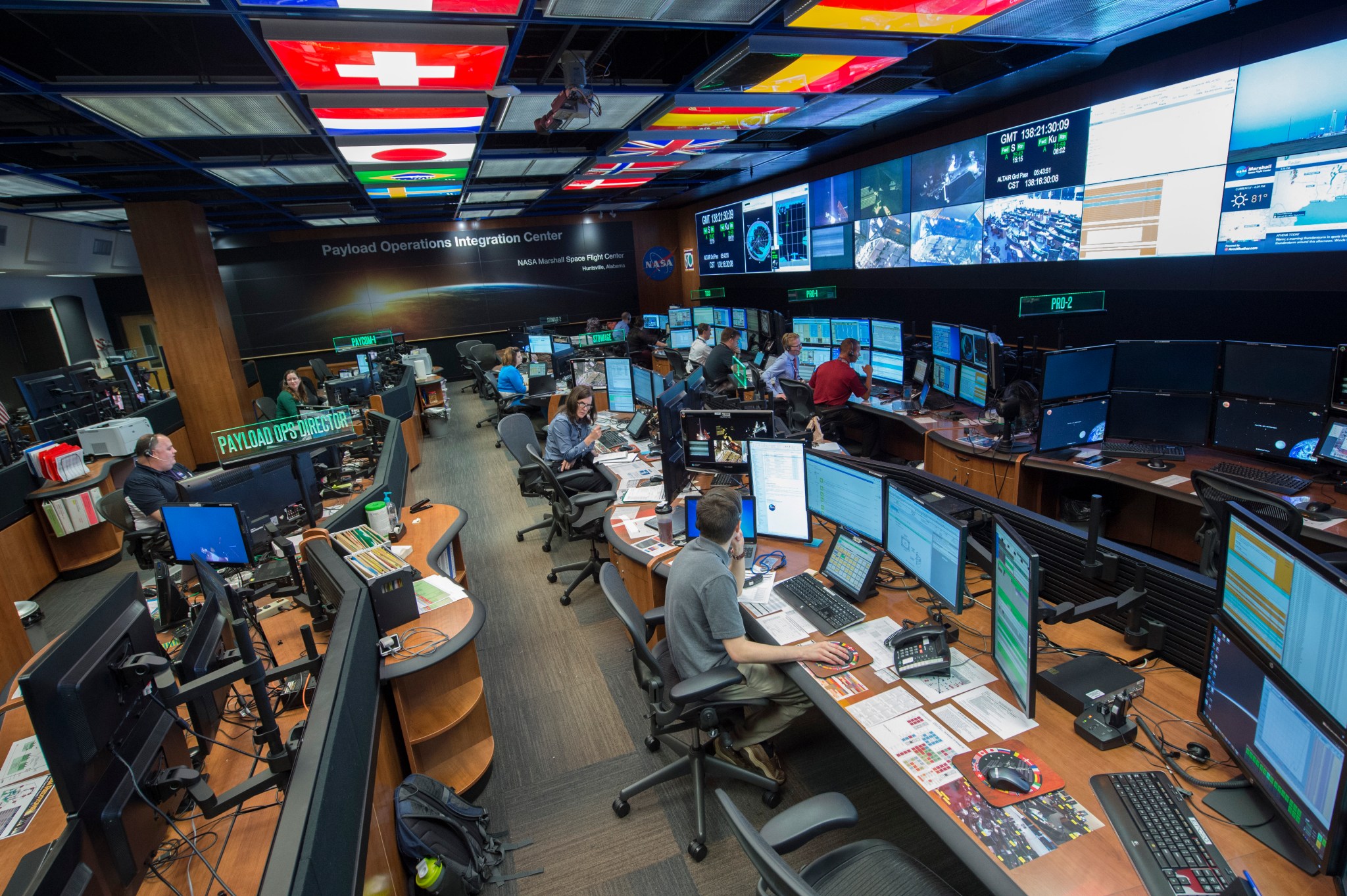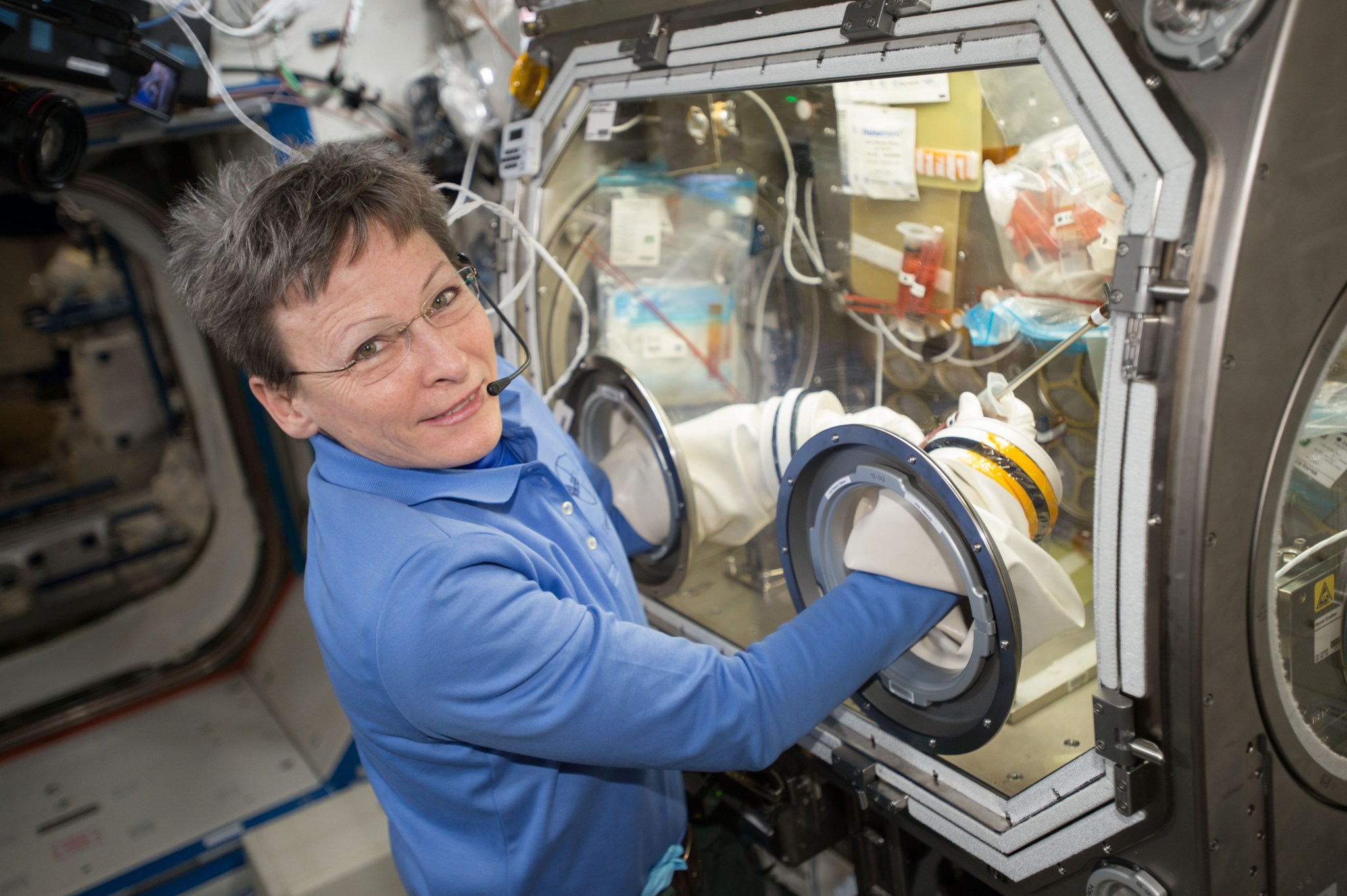NASA’s recent announcement of an additional crew member to the International Space Station, which will effectively double the amount of science data acquired from the orbiting laboratory, means a lot of changes. Many of them are on the ground at the Payload Operations Integration Center at NASA’s Marshall Space Flight Center in Huntsville, Alabama.
The POIC, mission control for science on the station, is home to dozens of expert flight controllers who are on console around the clock, 365 days a year, helping crew manage hundreds of critical research experiments. The flight controllers manage the connection between the scientists on the ground and the research in space, ensuring adequate resources are available, including power, cooling, and time on the astronauts’ schedules to perform the work aboard the space station.

When the idea to increase personnel on the space station was first discussed more than three years ago, the Marshall team knew it would need more trained and certified people to continue the flow of science data from space.
“Our team has done an outstanding job preparing for the fourth crew member,” said Bobby Watkins, director of Marshall’s Human Exploration and Development Operations office, which oversees the POIC. “They nearly doubled the workforce and streamlined the workflow, operations and communications processes to increase efficiency while still working their day job. The result is a credit to the passion, talent and dedication of our team.”
The new procedures were implemented recently, and hopefully the scientists around the world with experiments in orbit didn’t even notice the seamless transition.
Katie Presson and Tim Horvath, payload operations managers at Marshall, led the teams that analyzed how the POIC functioned, searching for potential improvements.
“Part of what we do is manage the resources on the space station for the investigations there,” Presson said. “We decided we could also better manage our resources here, changing the structure and shifting some tasking and responsibilities.”
The team decided to streamline communications to efficiently exchange important information between POIC’s planners, and the flight controllers who are on duty the day those experiments happen. “Improving the flow of information helps solve issues faster,” Presson said. “We created a timeline handover application and a communications dashboard where notes about investigations are integrated with the timeline of scheduled activities and everyone is literally on the same page.”
To help speed communication, the team also decided to empower flight controllers to take action without conferring with the payload operations director. “We wanted to allow flight controllers to take more ownership of the work we do,” Horvath said. “These are professionals who train and practice for months. They have the knowledge, and now the responsibility, for executing routine operations without taking up valuable time to track down and get approval from the shift leader.”
“The whole point is to become a more efficient group.”
Additionally, the team chose to relocate a representative of Marshall Ground Control inside the control room where the rest of the team monitors the hundreds of active investigations. Being located in the same room allows the ground control representative to help troubleshoot communications and data retrieval — providing a better service to the payload developers around the world. “We won’t have to transfer a call for assistance or arrange for the right support from the facility interface specialists,” said Horvath. “The Marshall Ground Control expertise will be right there in the room and can address the problem immediately.”
While these changes are being implemented now, they won’t be fully tested until the additional U.S. crew members arrives later this summer. “We’re treating this as a checkout phase,” Horvath said. “We’re testing it now when we’re at the normal complement of crew members, taking feedback and collecting data so we can assess what may need to be altered or changed.”
“It’s exciting,” Presson adds. “We’ve been planning and practicing for weeks. At this point, it’s time to flip the switch and see the results. The ideal day will be when that fourth astronaut arrives on the space station and the entire crew is performing science, maxing out our resources and getting everything done.”





























